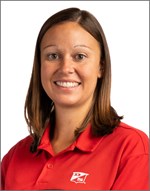Corn Drydown Update 2022
BY Dairyland Seed Agronomy Team
We took a comprehensive look at this topic in our Corn Drydown and Maturity article from October 5th, but since wet corn is a hot topic let’s do a quick status check for 2022. First, let’s review anticipated drydown rates
Drying Rates per Day: Iowa State University agronomists have found that drying rates early in the season will be close to 0.7 points per day and closer to 0.4 points per day later season(link). They also note little drydown through November. University of Wisconsin agronomists observed 0.76-0.92% during warm weather and 0.32-0.35% when cooler (link).
GDUs per Point of Moisture Loss: The same University of Wisconsin source states that drying grain from 30% to 25% requires 30 GDUs per point of moisture, and 45 GDUs per point to get from 25% to 20%. It makes sense that dryer grain is more difficult to dry. However, they also found that to dry 1 point on average, 20-22 GDUs are required in cool wet weather and 24-29 GDUs are required in warm weather. That’s right, GDUs are more efficiently used during cool wet weather! Of course, it still takes more days to dry in cooler weather. This may or may not be intuitive to you, but if its anything like fuel efficiency on the interstate; slower is a little better!
Outlook: We just experienced a 7-10 day stretch of favorable harvest and drydown weather across much of the Midwest. High temperatures pushing 80 and lows in the mid-50s have been delivering 15-20 GDUs each day, moving moisture 5% or more last week. A quick weather forecast survey of the Dairyland Seed footprint shows that most of us will experience 3-10 GDUs each day for the next 10 days. That could be about 3-4% of drying over that stretch. Hopefully this gets you to a satisfactory moisture level. If not, remember that while 15% corn might be best for your dryer bill, 25% corn is ideal for minimizing harvest losses.
 |
 |
 |
 |
 |
| Brian Weller Western Region 507.456.3034 |
Dan Ritter Central Region 219.863.0583 |
Branden Furseth Northern Region 608.513.4265 |
Mark Gibson Eastern Region 260.330.8968 |
Amanda Goffnett Eastern Region 989.400.3793 |
